Have you seen the $7 solar modules on the Sun Electronics web site? They are 70 watts, so that’s only a dime apiece for a whole watt! Can they be any good???
I admit it, I am a tightwad and bargain hunter. I didn’t need 50 more solar modules, but I saw where John was advertising these solar panels so cheap and I could not resist. Apparently a lot of people have reservations about these things, because he still has plenty. I’ll tell you the good, bad and ugly bits of my experience and you can make up your own mind if they are for you.
First of all, these are first rate, name brand gear. Google First Solar FS-270 for the spec sheets. Second, they are second hand, having been removed from a school. (why were they removed????) Finally, they are “thin film” modules.
Mostly John sells poly- or mono-crystalline modules. There is somehow a perception among some folks that these are better. However, if you look at pictures of solar farms, you will see an awful lot of these very same thin film modules in use. The pros use them. Here are some general characteristics.
Thin film panels are bigger for a given wattage. Maybe these were taken out of service so they could get more watts from the same amount of space.
Thin film panels work better in cloudy weather. They respond better to the light that is filtered through clouds than the other panels do.
These are rated for 70 watts and have an output of up to 100 volts.
Thin film panels are not as bothered by leaves and bird droppings. In a water monitoring device I used to build, a leaf or a bird splat could cover much of an individual cell on the small panels we used, killing the panel. On the thin film panels, only the amount of area covered by debris was degraded.
Thin film panels are heavier, per watt. The active material is sandwiched between 2 thick sheets of glass.
They are about 2’x4′ in size, making them easy for one person to handle.
Thin film panels can be fragile if not handled properly. Well, I guess that goes for most solar modules, doesn’t it? These have no protective aluminum frame, so there are extra handling and mounting considerations.
Not all of these panels have both MC3 connectors on them. Replacements are cheap, though.
Ok, that’s a bunch of general info. I will now get into a little more detail. I ordered a pallet of 50. That’s the minimum, but you can buy a shipping container full of them, if you need more. That was the easy part. 50 x $7 is $350. Did you ever think you could get 50 modules for that? Just call Roberto or Tony and they can take the order.
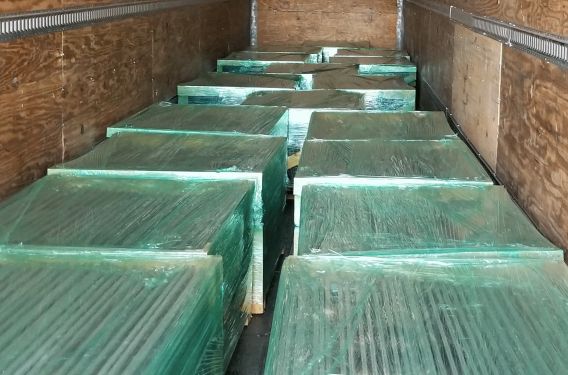
Shipping is where it hurts. If you are in California it is not so bad, but to get them all the way to Florida or anywhere else on the East Coast, it will probably cost more than the panels. For some reason, crossing the Mississippi River costs extra, or it seems that way. I did not have a good experience with this part of it. SAIA was the carrier and they have an unmanned terminal in Pensacola. I showed up and nobody was home. The way that works, you show up and wait until about sundown when the drivers start returning and you pounce on the first guy who shows up to demand your load. If you live in a bigger town you’ll probably have a better experience.
Well, a driver came, I pounced and he went off to a storage trailer with his forklift and returned with my pallet. It was leaning, which I took to be a bad sign. A guy in California builds these pallets and then the truckers attempt to break them. This time the trucker won and I got, if I remember right, 13 busted panels in the lot. Sun Electronics refunded the price of the busted units, but I no longer had 50 panels. I had my heart set on 50! Well, that’s how it sometimes goes. I checked and it seems my experience is the exception to the rule.
Well, here they are. What can I do with them? First of all, I need a quick and dirty solar lighting system for my boxcar. It is really a 40′ shipping container, but it looks like a boxcar, so that’s what we call it. It is also a long black hole. I strung LED light strips from stem to stern, plugged them into a cheapo car inverter, connected that to my hot spare 200amp sealed 12v battery, which is regulated by a 40 MPPT controller from my junk box and that is wired to 4 of these panels in parallel. Remember, these things put out about 100v, so you don’t want to get carried away with series strings unless you are doing a high voltage grid tie system and you will need an MPPT controller for battery systems.
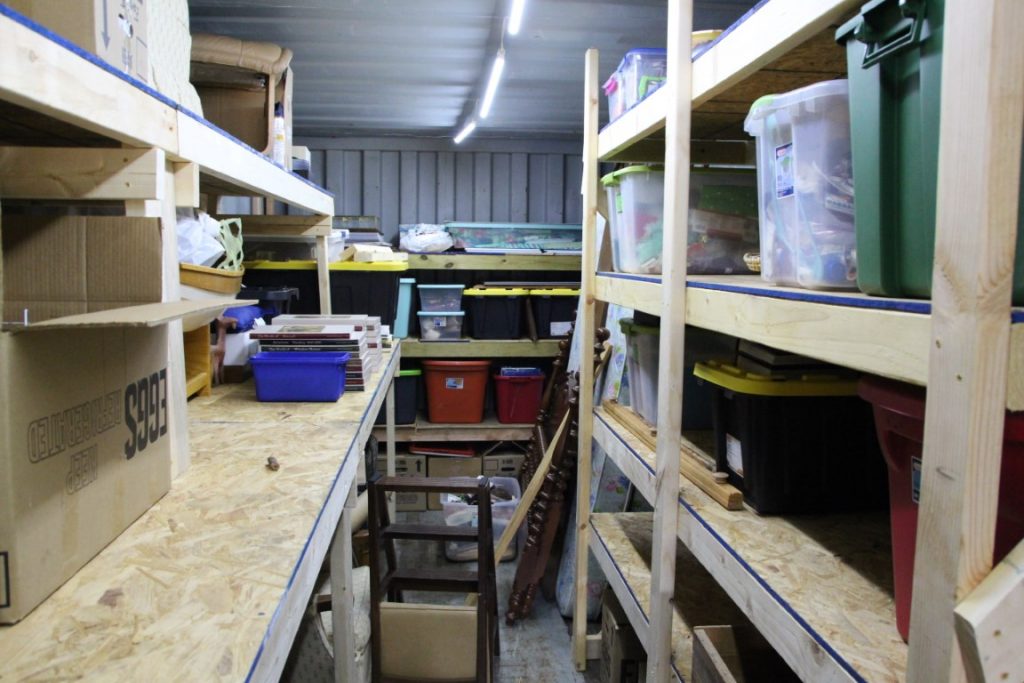
I have the greatest of intentions for mounting these panels properly after I put a seal coat on the top of the boxcar. Right now they are just up there on the roof. To complicate solar production they are not only horizontal, but they are in a deep forest where there is rarely a bit of direct sunlight and leaves are constantly falling. Sounds like a challenge, eh? That’s exactly why I chose the thin film panels for this project, because they work well in diffuse light and don’t mind a few leaves. How well are they producing? There is no way of knowing and it is hardly fair to judge them in a case like this. All I can tell you is that whenever I need the lights, they work.
I did another setup at the Solar Shed that is not only pretty conventional, but I have a recorder on it and am getting some data that I can compare with the other arrays.
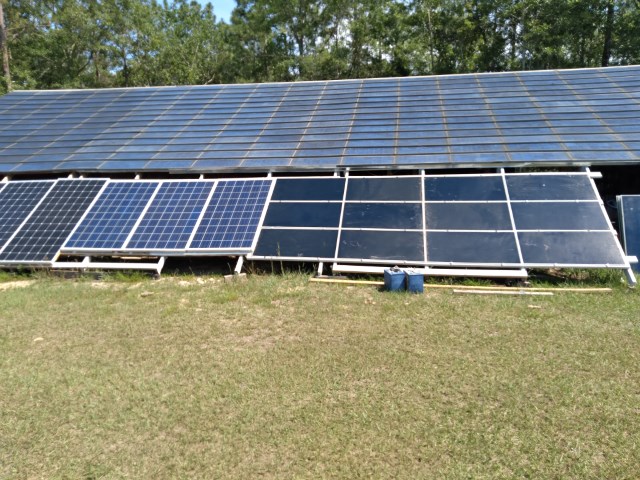
I put a dozen of them on the wooden test racks below the eaves of the Solar Shed. 12 x 70 will ideally yield 840 watts. The angle is way too steep for summertime, but I can compare with some poly panels mounted on the same rack. If you are into that sine and cosine stuff, we should expect around 70% of rated power this time of year.
The first bit of advice I am going to give you on mounting is don’t mount them on a wooden rack. Wood does not seem to die until you burn it. When it is dry it will twist this way and when it is wet it will twist the other way. My clamps were a little too snug on a couple of the modules and I ended up with two more broken ones. BUT, they still work, so I left them in place, for now.
Again, there is no metal frame, so you use clamps. I used rubber-backed discs, but the original setup used flat bars that you could probably duplicate with aluminum bar stock from Home Depot. A backing of inner tube rubber would be a nice touch. It really is pretty simple. You cannot mount them on a flat surface because the junction box is on the back of the panel. Mine are on wooden rails, but I recommend you go with more stable metal rails to avoid breaking them.
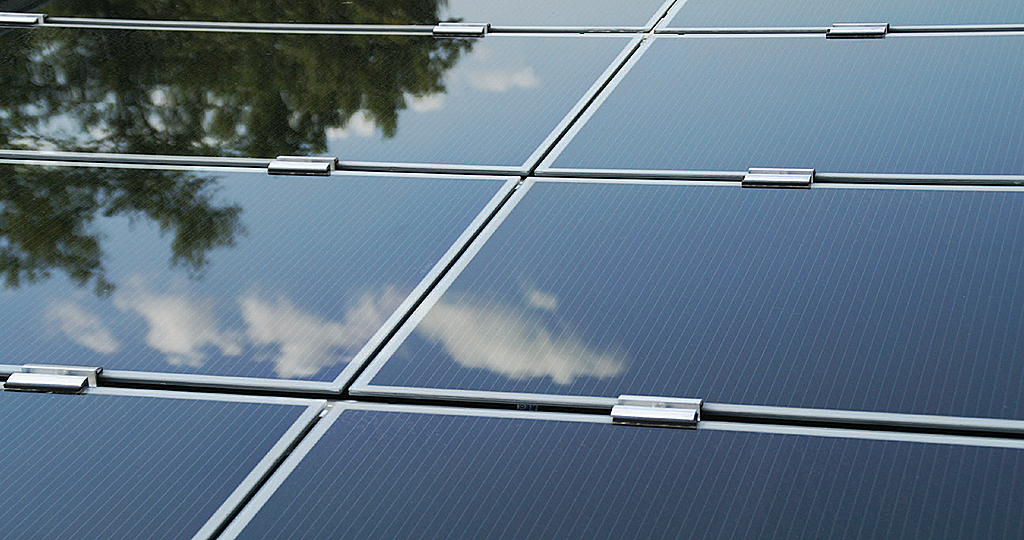
Since a MPPT charge controller typically maxes out around 150v, I just wired all 12 in parallel, using a special combiner harness I built. I can plug or deplug any of the MC3 connectors if I need to troubleshoot. I have plenty of controller capacity left, but I wired up this dozen independently so I can check performance. If I decide to make a permanent thing of this, I will run the power from this array through a combiner that includes diodes so the slight voltage mismatch won’t cause trouble. We don’t want the polys and the thin films fighting.
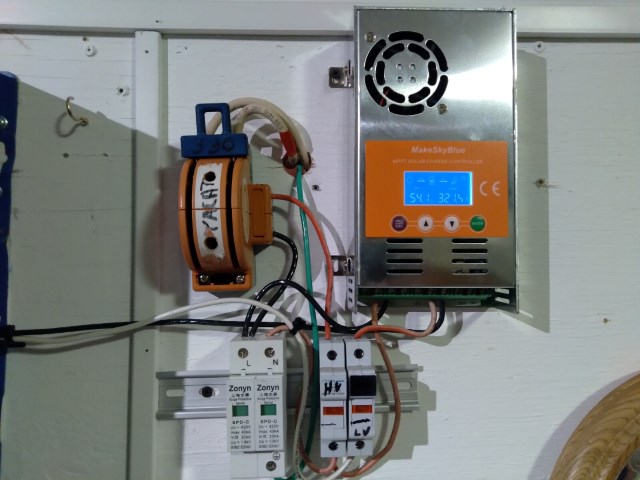
So how are they doing? I realized early on that I was probably missing a few watts because the system would charge up and the controller would cut back. It is pretty much running all out, now, by adjusting bulking and floating points just a tad higher than the other 5 charge controllers.
So far, they have produced 57 kwh and have averaged a bit over 2 kwh per day in this rainy season with a bit of Sahara dust cloud mixed in. I have seen 3 kwh in a day. I have observed a peak power of 572 of 840 rated watts. Given the steep mounting angle, that is just about right for the panels running at full rated power! John was worried that they might have lost a lot of capacity, but they are great!
Here are some random comparisons with a 1000 watt set on the same rack.
170/840 vs. 161/100 under overcast conditions.
439/840 vs. 400/1000 hazy
69/840 vs. 71/1000 very late and cloudy
345/840 vs. 320/1000 at 1pm under hazy sun
As you can see, the thin films sometimes outperform the larger poly array! I am betting the poly will do much better on the cool, clear days of winter.
I will continue monitor these panels for a performance update.
Conclusions? You’ll need to treat these a little more gently than framed panels, they’ll take up a little more space and they’ll cost a little more to ship, but with their handy size they are great for a DIY’er. You should be able to put together a first rate solar power system at a rock bottom price.
–Neal

Thanks Neal, Appreciate your article on these inexpensive panels. I am thinking a large carport for a motor home. I would like to use these for “roofing” panels by overlapping on the long edge 1/2″ and running the panels horizontally. I am not so concerned about leaking but more concerned about UV protection and shading. Any thoughts or observations would be greatly appreciated.
Thanks much in advance for your opinion.
Curt